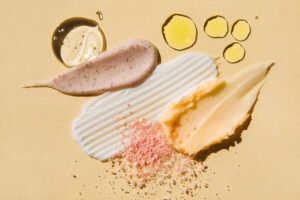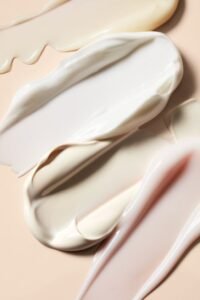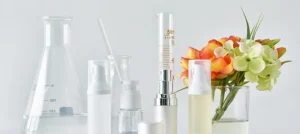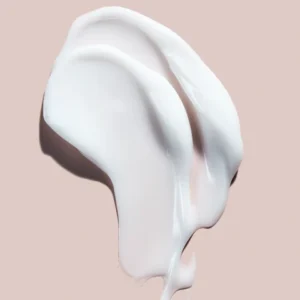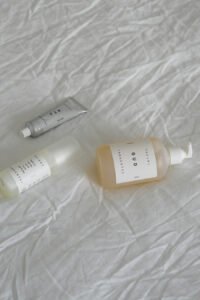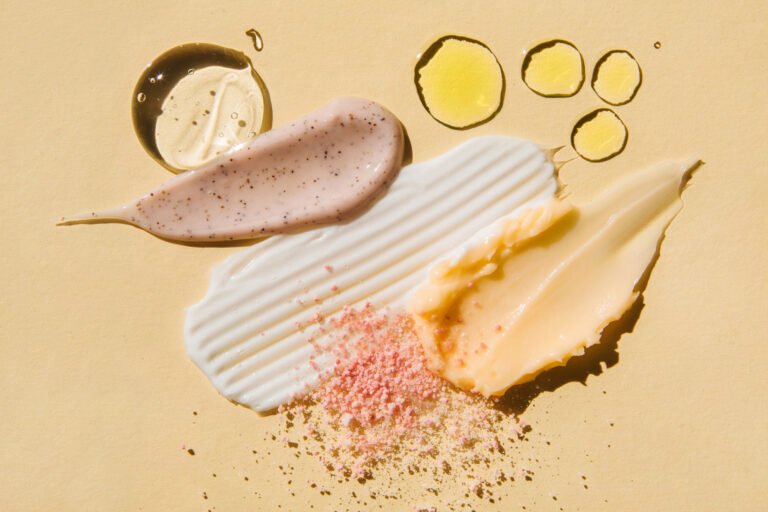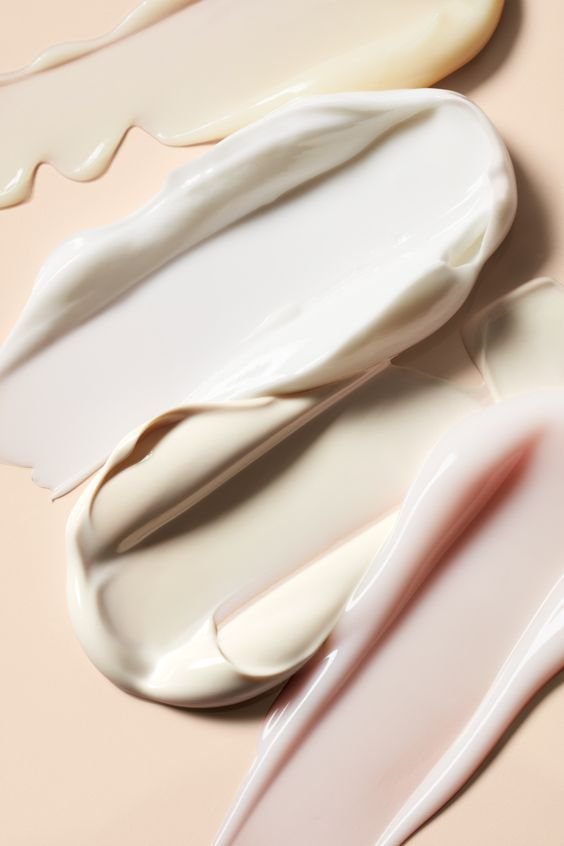Best Anti-Aging Ingredients to Look for in 2026 — What Science Says 💡
Aging is inevitable — but how our skin ages can be influenced. As we head into 2025, the skincare world is buzzing with new innovations, refined formulations, and emerging actives backed by science. Choosing the right ingredients is key: not every trendy compound delivers. In this post, we’ll break down the top anti-aging ingredients you should look for (or ask your dermatologist about) — and what current science supports.
Note: Always patch test and introduce new actives gradually, especially if you have sensitive skin or medical conditions.
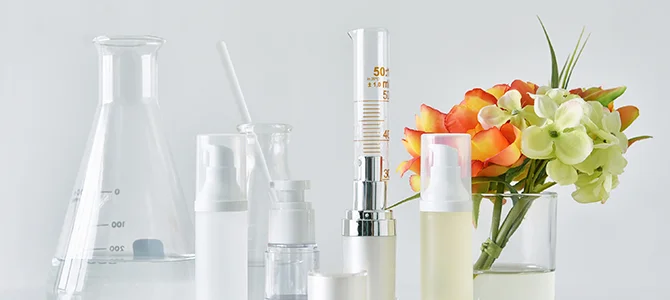
Why actives matter: The underlying challenges of skin aging
Before diving into ingredients, it helps to understand what happens in aging skin:
Collagen and elastin production decline
Oxidative stress and free radicals damage skin structure
Cellular repair and turnover slow
The skin barrier becomes weaker, moisture retention decreases
Accumulated sun damage, pigmentation, and inflammation compound over time
Effective anti-aging ingredients either stimulate repair/collagen synthesis, neutralize free radicals, strengthen the barrier, or regulate cell turnover — ideally combining several of these effects.
Top Anti-Aging Ingredients to Look for in 2025 🔍
Here are the standout actives — many already well known, some more emerging — that science is supporting for anti-aging benefits in 2025.
1. Retinoids / Retinol & derivatives
Still the gold standard.
Retinoids (vitamin A derivatives) are among the most studied anti-aging actives, shown to reduce fine lines, improve texture, even pigmentation, and boost collagen. Business Wire+3SciTechDaily+3News-Medical+3
In 2025, “next-generation retinoids” (like retinaldehyde, adapalene) are gaining more attention for having similar benefits with potentially lower irritation. Isdin+2NewBeauty+2
A recent study shows adapalene (a retinoid) produced a 40% reduction in forehead wrinkles over 6 months in one trial. Women’s Health
Note: Retinoids can increase photosensitivity. Use at night and always pair with a broad-spectrum SPF in the daytime.
2. Peptides & Signal Molecules
Smart messengers for youthful skin.
Peptides, especially signal peptides like Matrixyl and copper peptides, are already acknowledged as “workhorses” in anti-aging skincare. NewBeauty+2halecosmeceuticals.com+2
In 2025, formulations combining multiple peptides or “peptide complexes” are expected to be more precise in targeting firming, lifting, or repair. NewBeauty
Other advanced ingredients like exosomes and growth factors are also trending — they act as signaling molecules that stimulate cell repair, regeneration, and collagen/elastin synthesis. gcimagazine.texterity.com+3Byrdie+3halecosmeceuticals.com+3
3. Niacinamide (Vitamin B3)
A gentle multitasker.
Niacinamide is among the most versatile and tolerated anti-aging ingredients. It helps with barrier repair, reduces pigmentation, smooths fine lines, and improves elasticity. MDPI+4Trilogy Laboratories, LLC+4News-Medical+4
Clinical trials show that nicotinamide formulations (4–5%) can produce wrinkle, elasticity, and tone improvements comparable to retinol when combined properly. ResearchGate
It also has mild antimicrobial and anti-inflammatory effects, making it suitable for skin that’s prone to irritation or mild acne. MDPI
4. Vitamin C & Antioxidants
Defense against oxidative stress.
Vitamin C (especially in stable forms like L-ascorbic acid, ascorbyl tetra-, or THD ascorbate) remains a foundational antioxidant. It helps neutralize free radicals, prevents collagen breakdown, and brightens the skin. Business Wire+3Allure+3Trilogy Laboratories, LLC+3
As newer antioxidants mature, compounds like resveratrol are gaining attention — plant polyphenols with antioxidant and anti-inflammatory effects that may complement existing actives. Marie Claire UK+1
In 2025 formulations, pairing multiple antioxidants or combining them with repair actives is a key trend. gcimagazine.texterity.com
5. Hyaluronic Acid & Hydrators
Hydration is anti-aging.
Hydrators like hyaluronic acid help plump the skin, smooth fine lines, and support elasticity. In mature skin, moisture retention becomes paramount. Business Wire+3Allure+3Trilogy Laboratories, LLC+3
Because they don’t directly remodel collagen, hydrating ingredients are best used in combination with actives (retinoids, peptides) to maximize skin quality.
6. Ceramides, Lipids & Barrier Restorers
Strengthening skin from within.
With age, skin’s natural lipid (ceramide) content decreases, compromising barrier function. Restoring ceramides helps protect, reduce dehydration, and support smoother, more resilient skin. Allure+1
Well-formulated barrier restorers reduce irritation risk when using potent actives.
7. Tranexamic Acid & Brightening Actives
For discoloration and dark spots.
At the 2025 AAD meeting, tranexamic acid was spotlighted as a topical strategy to reduce dark spots by inhibiting certain pigmentation pathways. Isdin
Other brightening agents (e.g. low-dose kojic acid, niacinamide, licorice derivatives) may complement pigment control when used carefully.
8. Emerging & Cutting-edge Ingredients
What to watch for in 2025 and beyond.
NMN / NAD+ precursors — These molecules, tied to cellular energy and repair, are gaining buzz in anti-aging skincare and systemic research. myinvity.com
Exosomes, PDRN, Miniproteins — Trendy biotech actives that promise to deliver regenerative signals to stimulate repair and youthful function. Byrdie+1
Resveratrox® — A commercial ingredient under development with antioxidant, “healthy aging,” anti-pollution, and anti-elastase claims. NYSCC
“Lesser-known acids” — In 2025, some lesser-known acids (beyond AHA/BHA) are expected to get more traction. Isdin
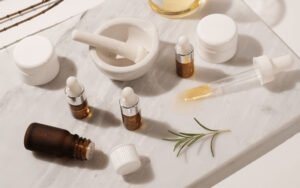
How to Build a Smart Anti-Aging Routine in 2025 🧴
Knowing ingredients is one thing — applying them wisely is another. Here’s how to put things together:
Morning Routine:
Gentle cleanser
Antioxidant serum (e.g. vitamin C, resveratrol blend)
Hydrator / humectant (like hyaluronic acid)
Barrier booster (ceramides, lipids)
Broad-spectrum SPF 30+ (non-negotiable)
Evening Routine:
Cleanser
Retinoid / retinal / peptide serum (start 2–3× per week, then build up)
Niacinamide / calming serum
Peptides, growth factors, or regenerative actives
Moisturizer + barrier lipids
Tips & cautions:
Introduce one new active at a time to monitor tolerance.
Use lower concentrations initially (e.g. 0.2–0.5% retinol) and build gradually.
Avoid layering strong actives (e.g. retinol + strong acids) without spacing them out or alternating nights.
Always patch test, particularly with new biotech/event-driven ingredients.
What the Science Says: Strengths & Gaps
| Ingredient | Strength of Evidence | Caveats / Gaps |
|---|---|---|
| Retinoids | Very strong, decades of dermatological support The Guardian+3SciTechDaily+3Allure+3 | Irritation risk, photosensitivity |
| Peptides / signal molecules | Moderate to growing; especially in complexes NewBeauty+2halecosmeceuticals.com+2 | Delivery, stability, cost |
| Niacinamide | Solid clinical support for multiple benefits PMC+2News-Medical+2 | Effects are moderate vs strong actives |
| Vitamin C / antioxidants | Strong mechanistically; many derivatives tested Allure+1 | Stability issues; need correct formulation |
| Hydrators / lipids / ceramides | Well established in barrier support | They don’t “turn back time” — but support better results |
| Tranexamic acid & brighteners | Growing clinical interest Isdin | Pigment results often incremental, require consistent use |
| Emerging biotech (exosomes, NMN) | Promising but still in early-stage research Byrdie+2myinvity.com+2 | Cost, scalability, long-term safety data lacking |
Also, combining known workhorses (e.g. retinoids + peptides + antioxidants + barrier support) generally gives the strongest and most reliable results. The “next-gen” items are exciting, but they should complement—not replace—proven actives.
Final Thoughts
As we enter 2025, the best anti-aging ingredients are those with strong scientific backing, smart formulations, and complementary synergy. Retinoids, peptides, and antioxidants remain pillars — while biotech-driven ingredients like exosomes, NAD+ precursors, and smarter delivery systems are pushing boundaries.
But remember: no ingredient works in isolation. A balanced routine — with sun protection, hydration, barrier support, and smart actives introduced gradually — is still the foundation of skin longevity. Think of emerging ingredients as powerful allies, not miracle workers.
